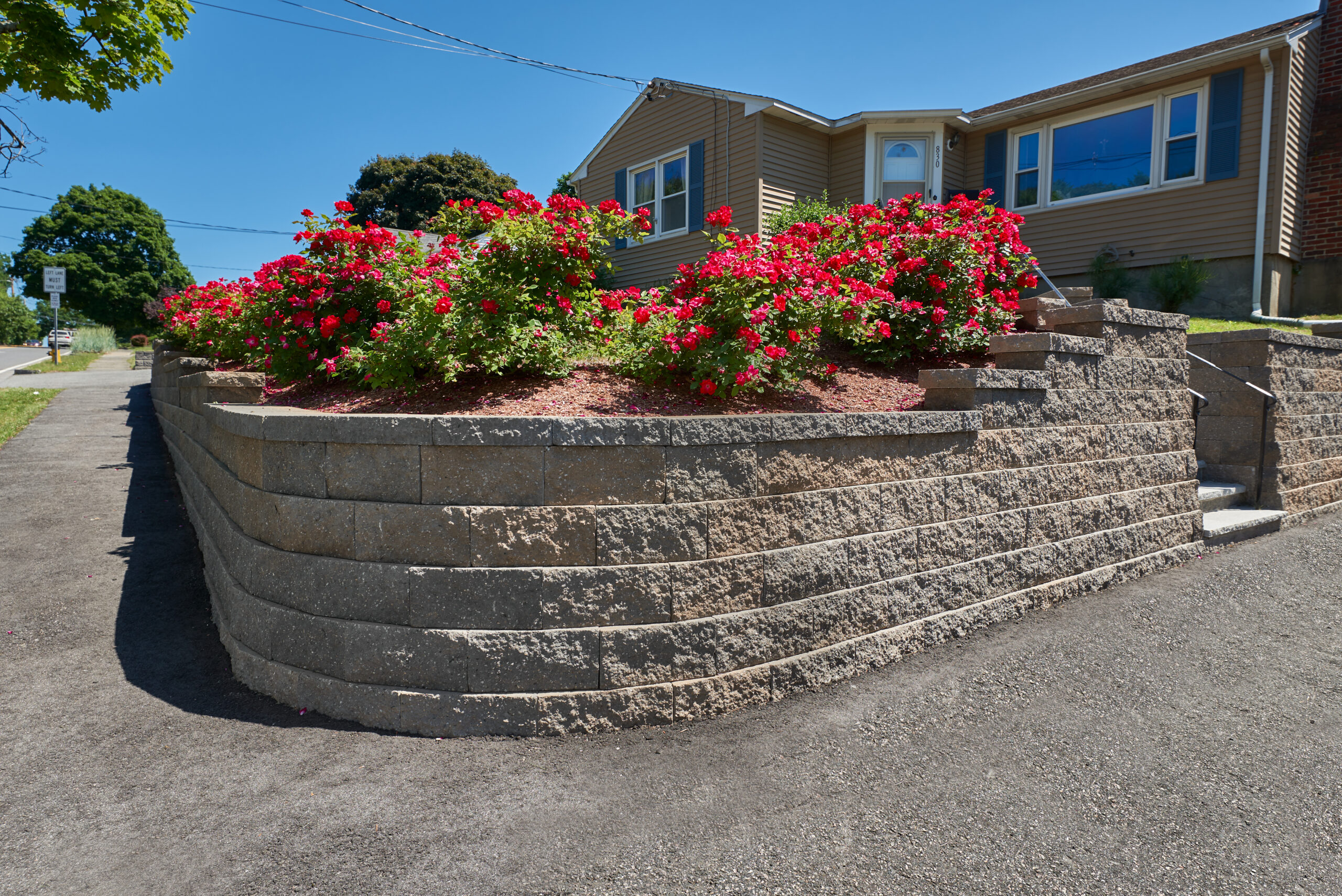Wall blocks that are retained have transcended their utilitarian origins, becoming the orchestrators of the canvas of outdoor space. Combining aesthetics and function They are now essential components in modern landscaping design. This article focuses on the numerous advantages of retaining walls and sheds light on the ways they can improve outdoor spaces.
The retaining wall block redefines traditional hardscape elements. It comes in a wide range of colors, sizes and shapes. This enables property owners to express their own unique aesthetic ideas. The design possibilities are endless, regardless of whether they’re constructed from the elegant rawness of natural concrete or stone. Landscape architects and designers employ blocks to create stunning and cohesive outdoor spaces that are reflective of the distinctness of the landscape.

Below the Surface Allure, Guardians of Stability
Beyond their attractive appearance, retaining wall blocks unfold numerous benefits. As stewards of the landscape the retaining wall blocks guard the landscape from erosion. These blocks provide stability in sloping or uneven terrains making irregular landscapes levels that can be used for peaceful living outdoors or lush gardens.
Retaining walls blocks are a cost-effective and efficient option for homeowners looking to improve their landscaping. They are a cost-effective option because of their straightforward installation and low-maintenance. They are not just visually appealing, they also serve as a solid and durable retaining wall without compromising on aesthetics. For more information, click Large Retaining Wall Blocks
Versatile Sculptors: Defining Outdoor Living Areas
Retaining wall blocks are no longer merely functional blocks for walls. They have evolved into sculptures that define the outdoor spaces. Through the integration of strategically placed blocks with the surrounding landscape, property owners can to create distinct zones for a variety of activities like al-fresco eating, relaxation and gardening. Beyond the practical use of demarcation the blocks can be used as versatile design elements providing privacy barriers or accentuating particular landscape features such as water installations or sculpture gardens.
The stacking ability of precast concrete landscaping blocks is one of their best features. They can support three courses in height before they require geogrid reinforcement in order to protect the soil that lies behind them. As walls rise in size, larger sizes are required for greater endurance and stability. With precision-designed interlocking systems, these blocks provide a structurally sound foundation for landscaping projects. Geo-grid reinforcements have been incorporated to ensure long-term durability and toughness. They help strengthen the wall against soil pressures.
Choosing the Right Block for the Right Ambiance
The choice of retaining walls requires careful curation that considers factors such as size, shape as well as color, texture, and in harmony with the outdoor environment. When choosing the walls for retaining, practical elements like the capacity of soil retention and height are taken into consideration. This carefully chosen choice enhances the overall design while ensuring an aesthetic and structural integrity.
Finale: A Symphony Resilience
In summary the retaining wall block concept can be a revolutionary element in landscape design. It aids in the development of an environmentally sustainable and resilient landscaping practice. These unassuming blocks, with the endless design possibilities in their capacity to stabilize and secure and define living spaces, turn into silent saboteurs, redefining outdoor space and weaving a story of harmony and timeless throughout the landscape. From a minimalist look to practical fortitude, retaining wall blocks are the masters of the symphony of nature in the great outdoors.
Leave a Reply